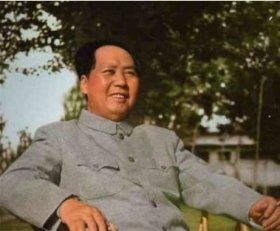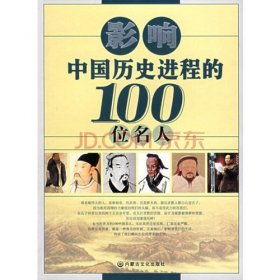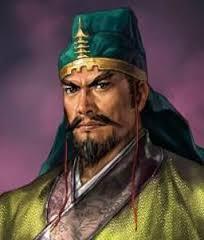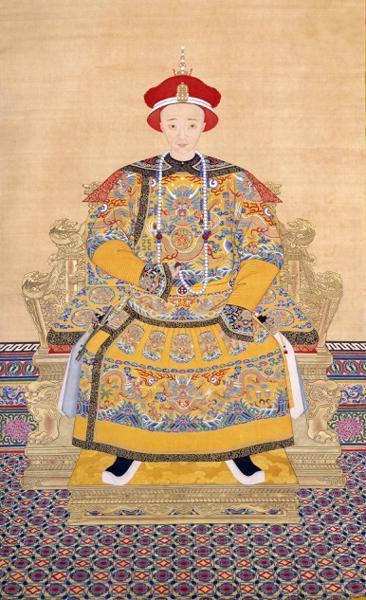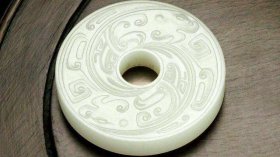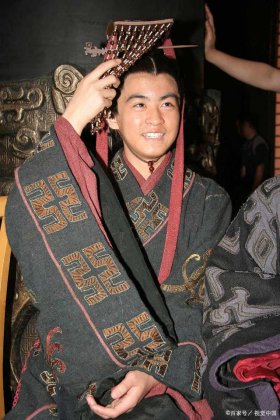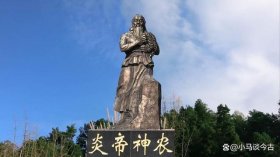甲骨文-王子揚:說甲骨文中的“逸”字
-
甲骨文,出土文献,中华书局

- 中国历史故事-小虎历史故事网
- 2023-09-01 17:12
- 小虎历史故事网
甲骨文-王子揚:說甲骨文中的“逸”字 ,对于想了解历史故事的朋友们来说,甲骨文-王子揚:說甲骨文中的“逸”字是一个非常想了解的问题,下面小编就带领大家看看这个问题。
原文标题:王子揚:說甲骨文中的“逸”字
说甲骨文中的“逸”字
(首发)
王子扬
首都师范大学文学院
一
甲骨文中屡见下列这样一个字,其代表字形有以下四类:
A.

甲骨文-王子揚:說甲骨文中的“逸”字

甲骨文-王子揚:說甲骨文中的“逸”字
B.

甲骨文-王子揚:說甲骨文中的“逸”字
C.

甲骨文-王子揚:說甲骨文中的“逸”字

甲骨文-王子揚:說甲骨文中的“逸”字
D.

甲骨文-王子揚:說甲骨文中的“逸”字

甲骨文-王子揚:說甲骨文中的“逸”字
以上四组字形,以A、D居多,B、C为少;字体类别几乎都是典宾类,合集23559版也有此字,作C组字形,从整版字体风格看,应属于出组一类。[1]
此字过去多释“往”,[2]《综览》把A、B两组放在0770号,附在“往”字后面,可见作者是把这两组看成与“往”同字的;[3]影响很大的《类纂》,A、B、C、D公用一个字头,隶定为“

甲骨文-王子揚:說甲骨文中的“逸”字

甲骨文-王子揚:說甲骨文中的“逸”字

甲骨文-王子揚:說甲骨文中的“逸”字

甲骨文-王子揚:說甲骨文中的“逸”字

甲骨文-王子揚:說甲骨文中的“逸”字

甲骨文-王子揚:說甲骨文中的“逸”字

甲骨文-王子揚:說甲骨文中的“逸”字

甲骨文-王子揚:說甲骨文中的“逸”字

甲骨文-王子揚:說甲骨文中的“逸”字

甲骨文-王子揚:說甲骨文中的“逸”字

甲骨文-王子揚:說甲骨文中的“逸”字

甲骨文-王子揚:說甲骨文中的“逸”字

甲骨文-王子揚:說甲骨文中的“逸”字

甲骨文-王子揚:說甲骨文中的“逸”字

甲骨文-王子揚:說甲骨文中的“逸”字

甲骨文-王子揚:說甲骨文中的“逸”字

甲骨文-王子揚:說甲骨文中的“逸”字

甲骨文-王子揚:說甲骨文中的“逸”字

甲骨文-王子揚:說甲骨文中的“逸”字

甲骨文-王子揚:說甲骨文中的“逸”字

甲骨文-王子揚:說甲骨文中的“逸”字

甲骨文-王子揚:說甲骨文中的“逸”字

甲骨文-王子揚:說甲骨文中的“逸”字

甲骨文-王子揚:說甲骨文中的“逸”字

甲骨文-王子揚:說甲骨文中的“逸”字
“

甲骨文-王子揚:說甲骨文中的“逸”字

甲骨文-王子揚:說甲骨文中的“逸”字

甲骨文-王子揚:說甲骨文中的“逸”字

甲骨文-王子揚:說甲骨文中的“逸”字
张桂光先生在上引一文中,进一步指出“

甲骨文-王子揚:說甲骨文中的“逸”字

甲骨文-王子揚:說甲骨文中的“逸”字

甲骨文-王子揚:說甲骨文中的“逸”字

甲骨文-王子揚:說甲骨文中的“逸”字

甲骨文-王子揚:說甲骨文中的“逸”字
(1)贞:

甲骨文-王子揚:說甲骨文中的“逸”字

甲骨文-王子揚:說甲骨文中的“逸”字
(2)贞:

甲骨文-王子揚:說甲骨文中的“逸”字

甲骨文-王子揚:說甲骨文中的“逸”字
“

甲骨文-王子揚:說甲骨文中的“逸”字

甲骨文-王子揚:說甲骨文中的“逸”字

甲骨文-王子揚:說甲骨文中的“逸”字

甲骨文-王子揚:說甲骨文中的“逸”字

甲骨文-王子揚:說甲骨文中的“逸”字

甲骨文-王子揚:說甲骨文中的“逸”字

甲骨文-王子揚:說甲骨文中的“逸”字

甲骨文-王子揚:說甲骨文中的“逸”字

甲骨文-王子揚:說甲骨文中的“逸”字

甲骨文-王子揚:說甲骨文中的“逸”字

甲骨文-王子揚:說甲骨文中的“逸”字

甲骨文-王子揚:說甲骨文中的“逸”字

甲骨文-王子揚:說甲骨文中的“逸”字

甲骨文-王子揚:說甲骨文中的“逸”字

甲骨文-王子揚:說甲骨文中的“逸”字

甲骨文-王子揚:說甲骨文中的“逸”字

甲骨文-王子揚:說甲骨文中的“逸”字

甲骨文-王子揚:說甲骨文中的“逸”字

甲骨文-王子揚:說甲骨文中的“逸”字

甲骨文-王子揚:說甲骨文中的“逸”字

甲骨文-王子揚:說甲骨文中的“逸”字

甲骨文-王子揚:說甲骨文中的“逸”字

甲骨文-王子揚:說甲骨文中的“逸”字

甲骨文-王子揚:說甲骨文中的“逸”字

甲骨文-王子揚:說甲骨文中的“逸”字

甲骨文-王子揚:說甲骨文中的“逸”字

甲骨文-王子揚:說甲骨文中的“逸”字

甲骨文-王子揚:說甲骨文中的“逸”字

甲骨文-王子揚:說甲骨文中的“逸”字

甲骨文-王子揚:說甲骨文中的“逸”字

甲骨文-王子揚:說甲骨文中的“逸”字

甲骨文-王子揚:說甲骨文中的“逸”字

甲骨文-王子揚:說甲骨文中的“逸”字

甲骨文-王子揚:說甲骨文中的“逸”字

甲骨文-王子揚:說甲骨文中的“逸”字

甲骨文-王子揚:說甲骨文中的“逸”字

甲骨文-王子揚:說甲骨文中的“逸”字

甲骨文-王子揚:說甲骨文中的“逸”字

甲骨文-王子揚:說甲骨文中的“逸”字

甲骨文-王子揚:說甲骨文中的“逸”字

甲骨文-王子揚:說甲骨文中的“逸”字
文字学一般规律告诉我们,如果参与构字的偏旁在一种文字系统中有繁简两种形体,那么其中的简体在参与构字时会呈现出类化的趋势,平行分布在从此偏旁的字形中,不大可能出现这种情况即这种简体只出现在具体某一个字中。比如甲骨文中像器皿之形的“皿”字,单独成字作“

甲骨文-王子揚:說甲骨文中的“逸”字

甲骨文-王子揚:說甲骨文中的“逸”字

甲骨文-王子揚:說甲骨文中的“逸”字

甲骨文-王子揚:說甲骨文中的“逸”字

甲骨文-王子揚:說甲骨文中的“逸”字

甲骨文-王子揚:說甲骨文中的“逸”字

甲骨文-王子揚:說甲骨文中的“逸”字

甲骨文-王子揚:說甲骨文中的“逸”字

甲骨文-王子揚:說甲骨文中的“逸”字

甲骨文-王子揚:說甲骨文中的“逸”字

甲骨文-王子揚:說甲骨文中的“逸”字

甲骨文-王子揚:說甲骨文中的“逸”字

甲骨文-王子揚:說甲骨文中的“逸”字

甲骨文-王子揚:說甲骨文中的“逸”字
二
从卜辞辞例和字形结构上看,本文开头列出的四组形体是一字异体,应该首先肯定下来。我们知道,甲骨文中的“土”字在作为构字偏旁时可以省去下面的一短横。如“

甲骨文-王子揚:說甲骨文中的“逸”字

甲骨文-王子揚:說甲骨文中的“逸”字

甲骨文-王子揚:說甲骨文中的“逸”字

甲骨文-王子揚:說甲骨文中的“逸”字

甲骨文-王子揚:說甲骨文中的“逸”字

甲骨文-王子揚:說甲骨文中的“逸”字

甲骨文-王子揚:說甲骨文中的“逸”字

甲骨文-王子揚:說甲骨文中的“逸”字

甲骨文-王子揚:說甲骨文中的“逸”字

甲骨文-王子揚:說甲骨文中的“逸”字

甲骨文-王子揚:說甲骨文中的“逸”字
“埶”字在甲骨文中有诸多写法,下面编成三组以醒目:
a.

甲骨文-王子揚:說甲骨文中的“逸”字

甲骨文-王子揚:說甲骨文中的“逸”字
b.

甲骨文-王子揚:說甲骨文中的“逸”字

甲骨文-王子揚:說甲骨文中的“逸”字
c.

甲骨文-王子揚:說甲骨文中的“逸”字
上面三组“埶”字是裘锡圭先生《释殷墟甲骨文里的“远”“

甲骨文-王子揚:說甲骨文中的“逸”字

甲骨文-王子揚:說甲骨文中的“逸”字
这个字的左旁的下部明明是“土”字,……“土”上的“

甲骨文-王子揚:說甲骨文中的“逸”字

甲骨文-王子揚:說甲骨文中的“逸”字

甲骨文-王子揚:說甲骨文中的“逸”字

甲骨文-王子揚:說甲骨文中的“逸”字

甲骨文-王子揚:說甲骨文中的“逸”字

甲骨文-王子揚:說甲骨文中的“逸”字

甲骨文-王子揚:說甲骨文中的“逸”字

甲骨文-王子揚:說甲骨文中的“逸”字

甲骨文-王子揚:說甲骨文中的“逸”字

甲骨文-王子揚:說甲骨文中的“逸”字

甲骨文-王子揚:說甲骨文中的“逸”字

甲骨文-王子揚:說甲骨文中的“逸”字

甲骨文-王子揚:說甲骨文中的“逸”字

甲骨文-王子揚:說甲骨文中的“逸”字

甲骨文-王子揚:說甲骨文中的“逸”字

甲骨文-王子揚:說甲骨文中的“逸”字

甲骨文-王子揚:說甲骨文中的“逸”字
裘先生又联系西周金文“

甲骨文-王子揚:說甲骨文中的“逸”字

甲骨文-王子揚:說甲骨文中的“逸”字

甲骨文-王子揚:說甲骨文中的“逸”字

甲骨文-王子揚:說甲骨文中的“逸”字

甲骨文-王子揚:說甲骨文中的“逸”字

甲骨文-王子揚:說甲骨文中的“逸”字

甲骨文-王子揚:說甲骨文中的“逸”字

甲骨文-王子揚:說甲骨文中的“逸”字

甲骨文-王子揚:說甲骨文中的“逸”字

甲骨文-王子揚:說甲骨文中的“逸”字

甲骨文-王子揚:說甲骨文中的“逸”字

甲骨文-王子揚:說甲骨文中的“逸”字

甲骨文-王子揚:說甲骨文中的“逸”字

甲骨文-王子揚:說甲骨文中的“逸”字

甲骨文-王子揚:說甲骨文中的“逸”字
现在回过头看本文开头举出的四组形体,A组形体除去上部“止”形后的形体可以说和上面“

甲骨文-王子揚:說甲骨文中的“逸”字

甲骨文-王子揚:說甲骨文中的“逸”字

甲骨文-王子揚:說甲骨文中的“逸”字

甲骨文-王子揚:說甲骨文中的“逸”字
我们说

甲骨文-王子揚:說甲骨文中的“逸”字

甲骨文-王子揚:說甲骨文中的“逸”字

甲骨文-王子揚:說甲骨文中的“逸”字
根据类化分布的特征,知道前面A、B、C、D确实是一字的异体,其简省形式与“

甲骨文-王子揚:說甲骨文中的“逸”字

甲骨文-王子揚:說甲骨文中的“逸”字

甲骨文-王子揚:說甲骨文中的“逸”字
可是这个从“止”从“埶”省声的

甲骨文-王子揚:說甲骨文中的“逸”字

甲骨文-王子揚:說甲骨文中的“逸”字

甲骨文-王子揚:說甲骨文中的“逸”字

甲骨文-王子揚:說甲骨文中的“逸”字

甲骨文-王子揚:說甲骨文中的“逸”字

甲骨文-王子揚:說甲骨文中的“逸”字

甲骨文-王子揚:說甲骨文中的“逸”字

甲骨文-王子揚:說甲骨文中的“逸”字
三
既然“

甲骨文-王子揚:說甲骨文中的“逸”字

甲骨文-王子揚:說甲骨文中的“逸”字
卜辞有“逸自+地名”,如:
(1)[□□卜]亘贞:王馘(?)[21]允□逸自敦廪。 [合858 典宾]
(2)呼师般取逸自敦。用。 [合839 186 典宾]
“敦”在卜辞中出现频率很高,是洹水西岸的一个重要的田猎区,卜辞经常卜问“田敦”是否有灾可以证明这一点。卜辞还经常占断王是否“往于敦”、“出于敦”,也经常说“在敦贞”,可见“敦”在商代是个相当重要的地区,商王常常往来其间,有时还在敦地进行酒、宜等祭祀。如此,在敦这个地方肯定有大量的奴隶为商王及其统治阶级服役,由于不堪繁重劳役逃跑在所难免。这两条卜辞正是很好的说明。上引(1)“逸”前一字漫漶不清,不知是什么字,从辞例看应该是个表示“获执、拘捕”一类意思的动词,“逸自敦廪”当是这个动词的宾语,意思是从敦地仓廪逃逸的奴隶。(2)是命令师般捕取从敦地逃逸的奴隶。
卜辞中还可以见到其他地方有逃逸奴隶的现象,如:
(3)丁酉卜宾贞:州臣有逸自

甲骨文-王子揚:說甲骨文中的“逸”字
(4)贞:逸自

甲骨文-王子揚:說甲骨文中的“逸”字
(5)贞:逸自

甲骨文-王子揚:說甲骨文中的“逸”字
(6)[贞]:逸自

甲骨文-王子揚:說甲骨文中的“逸”字

甲骨文-王子揚:說甲骨文中的“逸”字

甲骨文-王子揚:說甲骨文中的“逸”字
上面提到的

甲骨文-王子揚:說甲骨文中的“逸”字

甲骨文-王子揚:說甲骨文中的“逸”字

甲骨文-王子揚:說甲骨文中的“逸”字
奴隶逃亡在商代应该很为普遍,商王很重视奴隶逃亡事件,甚至把有奴隶逃亡看成是灾咎,如:
(7)癸丑卜争贞:旬无忧。王占曰:“有咎有

甲骨文-王子揚:說甲骨文中的“逸”字
正是因为商王很看重奴隶逃亡,所以十分关心逃逸的奴隶是否会被抓捕回来,所以反复进行占卜:
(8)贞:逸不其得。 [合854 典宾]
(9)

甲骨文-王子揚:說甲骨文中的“逸”字

甲骨文-王子揚:說甲骨文中的“逸”字
(10)

甲骨文-王子揚:說甲骨文中的“逸”字

甲骨文-王子揚:說甲骨文中的“逸”字

甲骨文-王子揚:說甲骨文中的“逸”字

甲骨文-王子揚:說甲骨文中的“逸”字
(11)甲午卜争贞:逸刍

甲骨文-王子揚:說甲骨文中的“逸”字
(12)贞:逸刍不其得。 [合131 典宾]
(13)贞:逸刍得。
不其得。 [合133正 典宾]
(14)贞:逸刍不[其得]。 [合132 典宾]
(15)[□□]卜宾[贞]:逸刍

甲骨文-王子揚:說甲骨文中的“逸”字
从卜辞屡言“逸刍”看,上引(7)、(8)中的“逸”当是“逸某”之省,也许就是“逸刍”之省,“逸刍”意思是逃逸的为王打草的奴隶。有时商王还会亲自占断,如:
(16)己卯卜古贞:

甲骨文-王子揚:說甲骨文中的“逸”字

甲骨文-王子揚:說甲骨文中的“逸”字

甲骨文-王子揚:說甲骨文中的“逸”字

甲骨文-王子揚:說甲骨文中的“逸”字
商王关心逃逸的奴隶能否被抓捕带回,经常主动派人去某地取抓捕的逃逸之人,见于合集840、841、842(正),商王也会对这些人是否会送来抓捕的逃逸奴隶进行占卜,如:
(17)甲寅卜争贞:

甲骨文-王子揚:說甲骨文中的“逸”字

甲骨文-王子揚:說甲骨文中的“逸”字
贞:

甲骨文-王子揚:說甲骨文中的“逸”字

甲骨文-王子揚:說甲骨文中的“逸”字
贞:

甲骨文-王子揚:說甲骨文中的“逸”字
“以”当训“致送”,这条卜辞是占问这个人是否会把从

甲骨文-王子揚:說甲骨文中的“逸”字

甲骨文-王子揚:說甲骨文中的“逸”字

甲骨文-王子揚:說甲骨文中的“逸”字

甲骨文-王子揚:說甲骨文中的“逸”字

甲骨文-王子揚:說甲骨文中的“逸”字

甲骨文-王子揚:說甲骨文中的“逸”字
以上这些卜辞中的“逸”都可以直接训为“逃逸”,辞意晓畅无碍。还有个别的卜辞,直接训为“逃逸”似乎不好讲。请看:
(18)贞:于羌甲禦,克逸疾。 [合641 典宾]
(19)壬子卜古贞:妣己克逸

甲骨文-王子揚:說甲骨文中的“逸”字
(20a)贞:御王于羌[甲],克

甲骨文-王子揚:說甲骨文中的“逸”字
(20b)弗其克[

甲骨文-王子揚:說甲骨文中的“逸”字
上引(19)“逸”下面辞残,根据上引(18),可能是“疾”字。为了说明(18)、(19)两条卜辞的意思,先看上引(20)。这条卜辞出现了“王”,这是为王向羌甲举行御祭。“

甲骨文-王子揚:說甲骨文中的“逸”字

甲骨文-王子揚:說甲骨文中的“逸”字

甲骨文-王子揚:說甲骨文中的“逸”字
又有这样的卜辞:
(21a)癸酉卜殻贞:旬无忧。王二曰:“匄(害)!”[23]王占曰:“俞[24]!有咎有

甲骨文-王子揚:說甲骨文中的“逸”字

甲骨文-王子揚:說甲骨文中的“逸”字
(21b)癸未卜殻贞:旬无忧。王占曰:“逸!乃兹有求(咎)。”六日戊子子发殟。一月。 [合10405正 典宾]
上引卜辞分别位于骨扇两侧。(21a)卜辞,李学勤先生有很好的意见,上引释文已经体现出来。值得注意的是,李先生将卜辞“俞 ”字与《尚书》中《尧典》和《皋陶谟》屡见的叹词“俞”对应起来,认为卜辞“俞”就应该是《尚书》中的叹词“俞” 。[26]这是一个很好的意见,于卜辞文气十分切合。同时对我们理解(23b)的“逸”也很有启发性。这个“逸”字所处的语法位置与(23a)辞的“俞”完全相同,也可能是个叹词。[27]
《合集》19309、19310辞残,从残辞“逸乃”看,很可能与《合集》10405正为同文残辞。另外,《合集》3297、3298:
(22a)戊戌卜殻贞:王曰侯豹:“逸!余不尔其合,以乃史归。”
(22b)戊戌卜殻贞:王曰侯豹:“母(毋)归,御。”
(22c)己亥卜殻贞:王曰侯豹:“余其得汝史,受。”
(22d)贞:王曰侯豹:“得汝史,

甲骨文-王子揚:說甲骨文中的“逸”字
(23a)[□□卜□贞:王曰]侯豹:“逸!余不尔其合,以乃史归。”
(23b)

甲骨文-王子揚:說甲骨文中的“逸”字

甲骨文-王子揚:說甲骨文中的“逸”字
(23c)

甲骨文-王子揚:說甲骨文中的“逸”字

甲骨文-王子揚:說甲骨文中的“逸”字

甲骨文-王子揚:說甲骨文中的“逸”字

甲骨文-王子揚:說甲骨文中的“逸”字

甲骨文-王子揚:說甲骨文中的“逸”字
上引(22)、(23)中的“逸”可能也是叹词。由于这两条中“合”、“受”、“史”的真实含义不能确知,所以不打算做太多的推测。方稚松先生曾经对这两条卜辞进行详细的说解,[29]可以参考。
卜辞又有:
(24)辛卯卜宾贞:以子

甲骨文-王子揚:說甲骨文中的“逸”字
辛卯卜宾贞:子

甲骨文-王子揚:說甲骨文中的“逸”字
命辞部分不必点断,可作一句读。“ 子

甲骨文-王子揚:說甲骨文中的“逸”字

甲骨文-王子揚:說甲骨文中的“逸”字

甲骨文-王子揚:說甲骨文中的“逸”字

甲骨文-王子揚:說甲骨文中的“逸”字

甲骨文-王子揚:說甲骨文中的“逸”字

甲骨文-王子揚:說甲骨文中的“逸”字

甲骨文-王子揚:說甲骨文中的“逸”字
总之,将“

甲骨文-王子揚:說甲骨文中的“逸”字
四
学者大多将本文所释的“

甲骨文-王子揚:說甲骨文中的“逸”字

甲骨文-王子揚:說甲骨文中的“逸”字

甲骨文-王子揚:說甲骨文中的“逸”字

甲骨文-王子揚:說甲骨文中的“逸”字

甲骨文-王子揚:說甲骨文中的“逸”字

甲骨文-王子揚:說甲骨文中的“逸”字

甲骨文-王子揚:說甲骨文中的“逸”字
赵平安师把甲骨文此种形体与楚简的

甲骨文-王子揚:說甲骨文中的“逸”字

甲骨文-王子揚:說甲骨文中的“逸”字

甲骨文-王子揚:說甲骨文中的“逸”字

甲骨文-王子揚:說甲骨文中的“逸”字

甲骨文-王子揚:說甲骨文中的“逸”字

甲骨文-王子揚:說甲骨文中的“逸”字

甲骨文-王子揚:說甲骨文中的“逸”字

甲骨文-王子揚:說甲骨文中的“逸”字
从字形上看,“止”在“

甲骨文-王子揚:說甲骨文中的“逸”字

甲骨文-王子揚:說甲骨文中的“逸”字

甲骨文-王子揚:說甲骨文中的“逸”字

甲骨文-王子揚:說甲骨文中的“逸”字

甲骨文-王子揚:說甲骨文中的“逸”字
中国历史上最多的三国故事
‘失’,对‘指人宾语’而言就是‘逸’。”[32]这段话也说明“
甲骨文-王子揚:說甲骨文中的“逸”字
从用法上看,将

甲骨文-王子揚:說甲骨文中的“逸”字
(25)辛亥卜古贞:追不

甲骨文-王子揚:說甲骨文中的“逸”字
(26)贞:遘不

甲骨文-王子揚:說甲骨文中的“逸”字

甲骨文-王子揚:說甲骨文中的“逸”字
(27)贞:王占曰:“遘勿

甲骨文-王子揚:說甲骨文中的“逸”字
(28)[王]占曰:“勿

甲骨文-王子揚:說甲骨文中的“逸”字
按照裘先生的研究,否定词“不”、 “弗”表示可能性和事实的,一般不能控制,相当于现代汉语的“不会……”;“勿”、“

甲骨文-王子揚:說甲骨文中的“逸”字

甲骨文-王子揚:說甲骨文中的“逸”字

甲骨文-王子揚:說甲骨文中的“逸”字

甲骨文-王子揚:說甲骨文中的“逸”字

甲骨文-王子揚:說甲骨文中的“逸”字

甲骨文-王子揚:說甲骨文中的“逸”字
下面这条卜辞似乎必须读为“失”:
(29a)□寅卜殻贞:般亡不若,不

甲骨文-王子揚:說甲骨文中的“逸”字
(29b)贞:龙亡不若,不

甲骨文-王子揚:說甲骨文中的“逸”字
(29c)贞:般亡不若,不

甲骨文-王子揚:說甲骨文中的“逸”字
(29d)贞:龙亡不若,不

甲骨文-王子揚:說甲骨文中的“逸”字
(29e)贞:般亡不若,[不

甲骨文-王子揚:說甲骨文中的“逸”字
(29f)贞:龙亡不若,不

甲骨文-王子揚:說甲骨文中的“逸”字
(29g)般其

甲骨文-王子揚:說甲骨文中的“逸”字
(29h)龙其

甲骨文-王子揚:說甲骨文中的“逸”字
(29i)其

甲骨文-王子揚:說甲骨文中的“逸”字
(29j)其

甲骨文-王子揚:說甲骨文中的“逸”字
此版反复占问“般”和“龙”两人是否会“失羌”。此版的“

甲骨文-王子揚:說甲骨文中的“逸”字

甲骨文-王子揚:說甲骨文中的“逸”字

甲骨文-王子揚:說甲骨文中的“逸”字
特别值得注意的是,就目前所见到的材料看,“

甲骨文-王子揚:說甲骨文中的“逸”字

甲骨文-王子揚:說甲骨文中的“逸”字

甲骨文-王子揚:說甲骨文中的“逸”字

甲骨文-王子揚:說甲骨文中的“逸”字

甲骨文-王子揚:說甲骨文中的“逸”字
这样看来,卜辞中

甲骨文-王子揚:說甲骨文中的“逸”字

甲骨文-王子揚:說甲骨文中的“逸”字

甲骨文-王子揚:說甲骨文中的“逸”字

甲骨文-王子揚:說甲骨文中的“逸”字
实际上,卜辞“

甲骨文-王子揚:說甲骨文中的“逸”字

甲骨文-王子揚:說甲骨文中的“逸”字
1、卜辞“逸”前一般不出现否定副词“不”、“勿”,而“

甲骨文-王子揚:說甲骨文中的“逸”字
2、卜辞“逸”有叹词的用法,而“

甲骨文-王子揚:說甲骨文中的“逸”字
3、“

甲骨文-王子揚:說甲骨文中的“逸”字
从这些情况看,“逸”和“失”在甲骨文中是有区别的,一般不相混淆。甲骨文“逸”的用法灵活,记录职能比较繁重。值得注意的是,古书中“逸”和“失 ”的职能分工和甲骨文相似。“逸”的记录任务更加繁重,记录“逃逸”、“逸乐”、“迅疾”三个词;而“失”则一般只记录“失去、丧失、失当、过失”这个词,用法几乎与甲骨文时代没有太大的区别。这个现象也可以为我们前面将“逸 ”、“失”分立的做法提供一个有力的旁证。
前面讨论的种种事实都可以说明卜辞中“

甲骨文-王子揚:說甲骨文中的“逸”字

甲骨文-王子揚:說甲骨文中的“逸”字
小文最后简单交待一下学者曾经指出两者有用法相似辞例的情况。先把辞例抄在下面:
(30)贞:

甲骨文-王子揚:說甲骨文中的“逸”字
(31)

甲骨文-王子揚:說甲骨文中的“逸”字

甲骨文-王子揚:說甲骨文中的“逸”字
(32)

甲骨文-王子揚:說甲骨文中的“逸”字

甲骨文-王子揚:說甲骨文中的“逸”字

甲骨文-王子揚:說甲骨文中的“逸”字

甲骨文-王子揚:說甲骨文中的“逸”字

甲骨文-王子揚:說甲骨文中的“逸”字

甲骨文-王子揚:說甲骨文中的“逸”字
(33)

甲骨文-王子揚:說甲骨文中的“逸”字

甲骨文-王子揚:說甲骨文中的“逸”字

甲骨文-王子揚:說甲骨文中的“逸”字

甲骨文-王子揚:說甲骨文中的“逸”字
这两组辞例惊人的相似,对我们前面的观点很不利,但不是不能解释的。我们知道,处于相同语法位置的字(词)并不可能都是同字,也可能代表意义相近或相反的两个词。举个最简单的例子,甲骨祭祀卜辞中有些祭祀动词使用起来很相似,语法位置完全相同,有时甚至用牲、祭祀对象都完全相同,学者并没有怀疑这些祭祀动词是一个字,这样的例子有很多,下面再举两组不是祭祀动词的例子。
(34)[□□]卜,[争]贞:□乙亥登南囧黍[于]祖乙。[合集1599 宾组]
(35)己巳贞:王其登南囧米,惠乙亥。[合集32024 历二]
显然上面这两条卜辞是乙亥日为同事而卜,辞例几乎一样,而“黍”和“米”不是一个字。又如:
(36)丙子卜,殻贞:今来羌,率用。
丙子卜,殻贞:今来羌,勿用。 [合248 ]
这两条同版卜辞全同,可是“率”和 “勿”并不同字。同样道理,“

甲骨文-王子揚:說甲骨文中的“逸”字

甲骨文-王子揚:說甲骨文中的“逸”字

甲骨文-王子揚:說甲骨文中的“逸”字

甲骨文-王子揚:說甲骨文中的“逸”字

甲骨文-王子揚:說甲骨文中的“逸”字

甲骨文-王子揚:說甲骨文中的“逸”字
这样看来,甲骨卜辞同时有“

甲骨文-王子揚:說甲骨文中的“逸”字

甲骨文-王子揚:說甲骨文中的“逸”字
五
最后简单总结一下本文的观点:卜辞屡见的“

甲骨文-王子揚:說甲骨文中的“逸”字

甲骨文-王子揚:說甲骨文中的“逸”字

甲骨文-王子揚:說甲骨文中的“逸”字

甲骨文-王子揚:說甲骨文中的“逸”字

甲骨文-王子揚:說甲骨文中的“逸”字

甲骨文-王子揚:說甲骨文中的“逸”字
附记:小文草成后送给黄天树师审阅,黄师订正了文中许多错误并提出了多条修改意见,小文修改时几乎全部采纳,谨向黄师表示最衷心的感谢!
12月6日写毕
[1] 黄天树:《殷墟王卜辞的分类与断代》,台湾文津出版社,1991年11月;2007年10月科学出版社再版,黄师对本书加了不少页下注,并且补入大量手摹图版,很方便阅读。本文关于字体的分类与断代意见皆按照此书,后面不再注明。另外,《合集》6版,从字体风格看,应属于宾组三类。
[2] 于省吾主编、姚孝遂按语:《甲骨文字诂林》第829-830页,中华书局,1996年5月
[3] 松丸道雄、高嶋谦一:《甲骨文字字释综览》189页,東京:東京大學東洋文化研究所,1993年3月。本书又把本文开头引出的C、D两组字单独编号为3246,可见作者认为这两组与A、B两组字不是一个字。这是不妥当的,详后。
[4] 姚孝遂、肖丁主编:《殷墟甲骨刻辞类纂》,第318-319页,中华书局,1989年1月
[5] 胡厚宣:《甲骨文所见殷代奴隶的反压迫斗争》,《考古学报》1976年1期第2页
[6] 张桂光:《古文字中的形体讹变》,载《古文字研究》第十五辑第178-179页,中华书局,1986年6月;后收入氏著《古文字论集》1-35页,中华书局,2004年10月
[7] 于省吾主编、姚孝遂按语:《甲骨文字诂林》第831页,中华书局,1996年5月
[8] 张桂光:《古文字中的形体讹变》,载《古文字研究》第十五辑第178-179页,中华书局,1986年6月;后收入氏著《古文字论集》1-35页,中华书局,2004年10月
[9] 为了排印方便,本文释文尽量使用通行字,下文不再一一注明。
[10] 赵平安:《释“

甲骨文-王子揚:說甲骨文中的“逸”字
[11] 赵平安:《释“

甲骨文-王子揚:說甲骨文中的“逸”字
[12] 赵平安:《战国文字的“

甲骨文-王子揚:說甲骨文中的“逸”字

甲骨文-王子揚:說甲骨文中的“逸”字
[13] 裘锡圭:《释殷墟甲骨文里的“远 ”“

甲骨文-王子揚:說甲骨文中的“逸”字
[14] 裘锡圭:《释殷墟甲骨文里的“远 ”“

甲骨文-王子揚:說甲骨文中的“逸”字
[15] 按照裘先生的研究,“迩”字也有作上下结构的,即《甲骨文编》407页1191号字,“犬”字位于“埶”字下部。
[16] 裘锡圭:《释殷墟甲骨文里的“远 ”“

甲骨文-王子揚:說甲骨文中的“逸”字
2002年)后来裘先生又发表《再談古文獻以“埶 ”表“設”》一文,补充了大量用例,可参看。
[17] 李家浩:《南越王墓车驲虎节铭文考释——战战国符节铭文研究之四》,《容庚先生百年诞辰纪念文集》第663-665页,广东人民出版社,1998年4月
[18] 李家浩:《南越王墓车驲虎节铭文考释——战战国符节铭文研究之四》,《容庚先生百年诞辰纪念文集》第662-671页,广东人民出版社,1998年4月;又《说“峚”字》,载中国文字学会、河北大学汉字研究中心编:《汉字研究》(第一辑)第 488-491页,学苑出版社,2005年6月
[19] 李家浩:《南越王墓车驲虎节铭文考释——战战国符节铭文研究之四》,《容庚先生百年诞辰纪念文集》第663-665页,广东人民出版社,1998年4月
[20] 李家浩:《说“峚”字》,载中国文字学会、河北大学汉字研究中心编:《汉字研究》(第一辑)第488-491页,学苑出版社,2005年6月
[21] 此字作“

甲骨文-王子揚:說甲骨文中的“逸”字

甲骨文-王子揚:說甲骨文中的“逸”字

甲骨文-王子揚:說甲骨文中的“逸”字

甲骨文-王子揚:說甲骨文中的“逸”字
[22] “

甲骨文-王子揚:說甲骨文中的“逸”字

甲骨文-王子揚:說甲骨文中的“逸”字

甲骨文-王子揚:說甲骨文中的“逸”字
[23] 李学勤:《<尧典>与甲骨卜辞中的叹词“俞”》,载《湖南大学学报》(社会科学版)2008年5月第3期,第6页。
[24] “俞”的考释请参考李学勤:《殷代地理简论》,科学出版社,1959年1月,后收入氏著《李学勤早期文集》157-277页,河北教育出版社,2008年1月
[25
中国历史故事字数
] 李学勤:《<尧典>与甲骨卜辞中的叹词“俞”》,载《湖南大学学报》(社会科学版)2008年5月第3期,第6页。[26] 李学勤:《<尧典>与甲骨卜辞中的叹词“俞”》,载《湖南大学学报》(社会科学版)2008年5月第3期,
第5-7页。
[27] 颇疑当读为文献中的“咨”。有意思的是用为叹词的“咨”也屡见《尚书·尧典》,与“俞”分布相同。
《尧典》:“帝曰:‘咨!汝羲暨和。期三百有六旬有六日,以闰月定四时,成岁。允厘百工,庶绩咸熙。’”
《尧典》:帝曰:“咨!四岳,汤汤洪水方割,荡荡怀山襄陵,浩浩滔天。”
《尧典》:帝曰:“咨!四岳。朕在位七十载,汝能庸命,巽朕位?”
《尧典》帝曰:“咨!汝二十有二人,钦哉!惟时亮天功。”[27]
《尧典》:舜曰:“咨,四岳!有能奋庸熙帝之载,使宅百揆亮采,惠畴?” 佥曰:“伯禹作司空。”帝曰:“俞!咨!禹,汝平水土,惟时懋哉!”
《尧典》:帝曰:“咨!四岳,有能典朕三礼?”佥曰:“伯夷!”帝曰:“ 俞!咨!伯,汝作秩宗。夙夜惟寅,直哉惟清。”
“俞”、“咨”多用于君臣一问一答中,在句中所处语法地位相同。《史记》在转引《尚书·尧典》篇时把“咨”直接改成当时常用的叹词“嗟”,可见“咨”在《尧典》时代就是当叹词用的。“咨 ”,《尔雅·释诂》:“嗟也。”《孔传》:“咨,嗟也。”《诗经·大雅·荡》反复说“文王曰咨,咨女殷商。”《毛传》:“咨,嗟也。”上引卜辞中“逸”用法与《尧典》中“咨”相同,很可能是个叹词。整条卜辞是说癸未日由贞人殻占问下一旬是否有咎忧,商王看过卜兆后说:“哎!这卜兆显现有灾咎。”果然,第六日子发“殟”,验证了王的占断。
文献中的叹词“咨”几乎全是帝王发出,与卜辞相符。值得注意的是,文献中有在祭祷时使用的“咨”,与卜辞颇似。《艺文类聚·卷三十九》载:“後汉张衡东巡诰曰:惟二月初吉,帝将狩于岱岳,展义省方,观民设教,率群宾,备法驾,以祖于东门,届于灵宫,是日也,有凤双集于台,壬辰,祀上帝于明堂,帝曰:咨!予不材,为天地主,栗栗翘翘,百僚万机,心之谓矣,孰朕之劳,上帝有灵,不替朕命,诞敢不祗承,凡庶与祭於坛墠之位者曰:怀尔邦君,寔原先帝,载厥太宗,以左右朕躬,群臣曰:帝道横被,旁行海表,一人有韪,万民赖之,从巡助祭者,兹惟嘉瑞,乃歌曰:皇皇者凤,通玄知时,萃于山趾,与帝邀期,吉事有祥,惟汉之祺,帝曰:朕不敢当,亦不敢蔽天之吉命。”
“咨”上古属精母脂部,“

甲骨文-王子揚:說甲骨文中的“逸”字
中国历史故事皇宫里的村庄
起来看,“
甲骨文-王子揚:說甲骨文中的“逸”字
[28] 与此同文的卜辞还有一些,如《合集》3301、《合集》3296正+《合集》3299(方稚松缀合,见《甲骨缀合十组》,《北方论丛》2006年第3期)、《合集》6130正+《合集》18377正(严一萍缀合,见蔡哲茂《甲骨缀合集》第55页,台北:乐学书局,1999年)等。限于篇幅,不具引。
[29] 方稚松:《甲骨缀合十组》,《北方论丛》2006年第3期第4-5页
[30] 陈剑:《殷墟卜辞的分期分类对甲骨文字考释的重要性》,《甲骨金文考释论集》第431-436页,线装书局,2007年4月
[31] 赵平安:《战国文字的“”与甲骨文“”为一字说》,《古文字研究》第二十二辑,275-277页,中华书局,2000年7月
[32] 沈培:《卜辞“雉众”补释》,《语言学论丛》第二十六辑,第250页,商务印书馆,2002年8月
[33] 这条卜辞比较特殊,将“王占曰” 与“贞”字连写,这样就使它处于了命辞位置。裘锡圭先生对这种现象有很好的意见,他在《释“厄”》一文解释《合集》94版说:“王占曰好其有子,孚”是“卜问王之占以为妇好有子,是否能应验”,背面“王占曰:吉,孚”应即此卜问的占辞,意谓此卜的兆“是吉利的,妇好有子之占能够应验”。(《纪念殷墟甲骨文发现一百周年国际学术研讨会论文集》第128-129页,社会科学文献出版社,2003年)此外,黄天树师在典宾中找到了这种类型卜辞六例,可以对比参看(《殷墟王卜辞的分类与断代》第43页,科学出版社,2007年10月)。上引(27)可以按此类推理解。
[34] 裘锡圭:《说“”》,载《古文字研究》第一辑,后收入氏著《古文字论集》117页,中华书局,1992年8月
[35] 此条是黄天树师指示我的,手头没有《醉古集》,释文依黄师给我批改小文时的修改稿写定。
[36] 沈培:《卜辞“雉众”补释》,《语言学论丛》第二十六辑,237-256页,商务印书馆,2002年8月
[37] 陈剑:《殷墟卜辞的分期分类对甲骨文字考释的重要性》,《甲骨金文考释论集》第371-378页,线装书局,2007年4月
[38] 赵平安:《战国文字的“”与甲骨文“”为一字说》,《古文字研究》第二十二辑,275-277页,中华书局,2000年7月
[39] 张桂光先生在《古文字中的形体讹变》一文指出的四组辞例相似用例,第二组和第三组是不可靠的。第二组释文(指合集135条)很奇怪,与合集不符,所以不能成为讨论问题的证据;第三组辞例并不是相近,只是占卜事项相关,也不好作为证据。张文可参看《古文字研究》第十五辑第178-179页,也可以参考氏著《古文字论集》1-35页,中华书局,2004年10月
[40] 古书中“逸”和以“失”为声符的 “佚”、“軼”、“”等经常通用,比如:表示“逃
中国历史人物爱国故事大全
逸”、“丧失”这个词,“逸”、“佚”经常无别,换句话说,两者在这个意义上同为一词。如《说文》:“逸,失也。从辵兔,兔谩善逃也。”以“失”训“逸”,可以看做声训,也可以理解为义训。《左传·桓公八年》:“随侯逸。”杜预注:“逸,逃也。”《国语·晋语》:“马逸不能止。”注:“逸,奔也。”《荀子·哀公》:“其马将失。”注:“失读为逸,奔也。家语作‘马将佚也。’”又如《尚书·皋陶谟》: “无教逸欲有邦。”而《汉书·王嘉传》作“亡敖佚欲有邦。”《公羊传·成公二年》:“其佚获奈何?”注:“佚获者,已获而逃亡也。”《荀子·宥坐》:“身不佚者志不飞广。”注:“佚与逸同,谓奔窜也。”可见经典中“逸”和“佚 ”在逃逸、丧失这个意义上是表示同词的。而表示“逸乐”这个词,“佚”、“逸”也通用。《广雅·释诂一》:“佚,乐也。”《诗经·小雅·十月之交》:“民莫不逸,我独不敢休。”郑笺:“逸,逸豫也。”《荀子·性恶》:“骨体肤理好愉佚。”注:“佚与逸同。”《论语·季氏》:“乐佚逰。”《释文》:“佚,本亦作逸。”在“讯疾”意义上,“ 逸”和“”又相通用。《文选·傅奕舞赋》:“良骏逸足。”注:“逸,疾也。”《说文》:“,马有疾足。”《玉篇》:“逸,马疾走也。”《广韵》:“,马行疾也。”可见“逸”与“失”关系又非常密切,两者读音应该很近,在甲骨时代,“失”和“逸”之间有没有可能通用,即前引(30)、(31)两条卜辞以及(32)、(33)两条卜辞有没有可能相通,从目前所见到的材料看,这种可能性似乎也不能完全排除。[41] 陈剑:《甲骨金文“”字补释》,《古文字研究》第二十五辑,中华书局,2004年10月,后收入氏著《甲骨金文考释论集》99-106页,线装书局,2007年4月
[42] 吴振武:《<合>33208号卜辞的文字学解释》,《史学集刊》2002年第1期,第20-23,又收入王宇信、宋镇豪主编《纪念殷墟甲骨文发现一百周年国际学术研讨会论文集》第139-148页,社会科学文献出版社,2003年3月
点击下载word版:

甲骨文-王子揚:說甲骨文中的“逸”字
原文出处:http://his.newdu.com/a/201711/05/512115.html
以上是关于甲骨文-王子揚:說甲骨文中的“逸”字的介绍,希望对想了解历史故事的朋友们有所帮助。
本文标题:甲骨文-王子揚:說甲骨文中的“逸”字;本文链接:http://gazx.sd.cn/zggs/28480.html。
猜你喜欢
- 历史-武丁把妇好杀了?史料记载并不是这样的 2023-08-14
- 中国历史-妇好:中国历史上第一个有史记载的女将军 2023-10-17
- 甲骨文-我国目前已知最早的比较成熟的文字 商代甲骨文的介绍 2023-10-14
- 历史-总以为她是神话人物 没想到发现了她的墓葬! 2023-10-12
- 历史-妇好是怎么死的?揭秘妇好的死亡真相? 2023-10-12
- 夏朝文字-夏朝有文字吗?中国古代夏朝的文字存在证据 2023-10-12
- 夏王桀-美人计加苦肉计 一男一女两人如何颠覆夏朝? 2023-10-11
- 中国历史-中国历史上第一个有史记载的女将军是谁 2023-10-10
- 商高宗-武丁妻子:一生四嫁能征惯战的奇女子妇好 2023-10-10
- 中国古代史-我国古代史上五位著名女将 居然没有花木兰 2023-10-09
